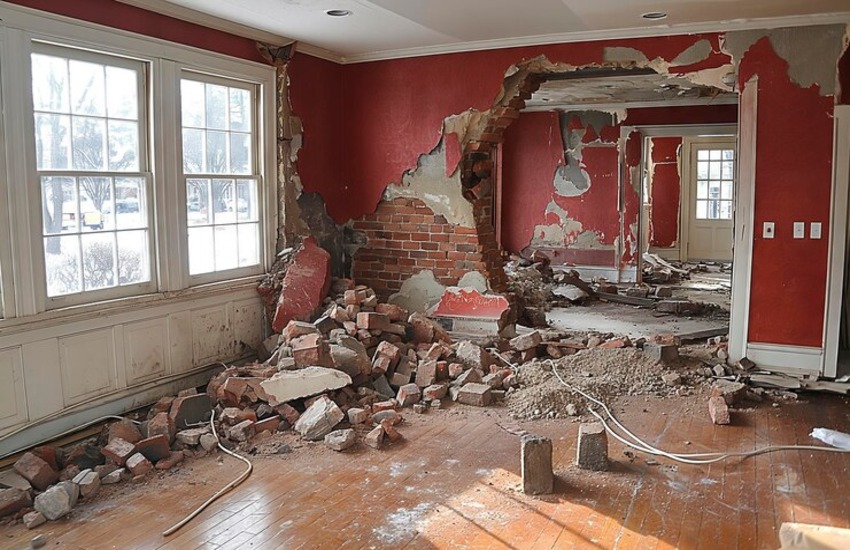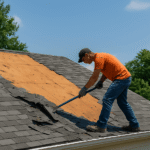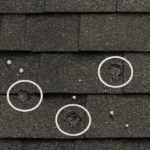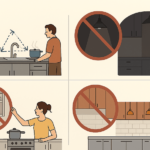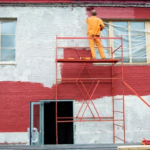No one knows when the disaster will strike and how much damage you’ll have to fix in your house. Whether it’s water damage from a burst pipe, fire damage, or a natural disaster like a storm, the recovery process is often overwhelming. However, you have two critical steps in restoring your home — mitigation and reconstruction.
While both are essential, they serve distinct purposes and are applied at different stages of the recovery process. As a house owner, you need to understand the difference between mitigation and reconstruction.
Hence, in this blog, we’ve made a detailed comparison of mitigation vs. reconstruction. This can help you make informed decisions to protect your property.
What is Mitigation?
Mitigation focuses on stopping further damage immediately after a disaster. Here, the primary goal is to stabilize the property and prevent additional harm to its structure or contents. Mitigation actions are fast and effective, ensuring no further deterioration occurs while setting the stage for reconstruction.
Some examples of mitigation tasks:
- Water removal to prevent mold growth.
- Boarding up windows or tarping roofs to secure the property.
- Drying and dehumidifying to stabilize moisture levels.
These efforts reduce risks and limit damage, helping you save time and money in the long run.
What is Reconstruction?
Reconstruction focuses on restoring your home to its original condition after. It comes after the mitigation process is complete. In other words, it is the second phase of recovery, addressing permanent repairs and rebuilding the affected areas.
Common reconstruction activities:
- Replacing damaged walls, floors, or roofs.
- Repairing electrical and plumbing systems.
- Restoring furniture, appliances, and personal belongings.
- Conducting final inspections to ensure safety and compliance.
Note: Reconstruction is a longer process compared to mitigation. It often requires coordination between contractors and specialists to bring your home back to its pre-disaster state.
6 Key Differences Between Mitigation and Reconstruction
1. Timing
Mitigation begins immediately after a disaster. Its purpose is to act quickly to stabilize the property and prevent further damage. For example, after a flood, mitigation teams extract water and dry out affected areas to stop mold from forming.
Reconstruction, on the other hand, starts only after mitigation is complete. This phase may take weeks or months, depending on the extent of the damage. It focuses on repairing the damage and restoring the property.
2. Purpose
Mitigation’s primary purpose is damage control. It ensures the disaster’s impact does not worsen. For instance, covering a roof damaged by a storm prevents water intrusion during the next rain.
Reconstruction’s goal is full restoration. It involves repairing, rebuilding, and replacing everything needed to bring your home back to normal. This includes addressing structural issues and ensuring the property is safe for living again.
3. Processes
Mitigation involves temporary measures to stabilize the property. Common steps include:
- Extracting water.
- Tarping roofs.
- Preventing mold.
Reconstruction involves permanent solutions, such as:
- Rebuilding walls and roofs.
- Restoring plumbing and electrical systems.
- Deep cleaning and painting.
Both processes require the help of house remodeling contractors. You can do the mitigation yourself with a little experience. However, reconstruction requires detailed planning and skilled labor.
4. Duration
Mitigation is typically a short-term process. In many cases, it takes a few days. For example, drying out a property after water damage often takes 48–72 hours.
Reconstruction, however, is a long-term effort. Depending on the severity of the damage, it can take several weeks to months. A fire-damaged home might require extensive work, from replacing walls to rewiring the electrical system.
5. Costs
Mitigation is generally less expensive because it involves short-term measures like water removal or roof tarping. It focuses on preventing further damage rather than repairing it.
Reconstruction is more costly, as it includes labor-intensive repairs and replacements. For instance, rebuilding a storm-damaged roof or replacing drywall comes with higher material and labor costs. Insurance may cover some expenses, but it’s essential to understand your policy.
6. Insurance Coverage
Insurance typically covers both mitigation and reconstruction, but the extent of coverage depends on your policy. Most policies prioritize mitigation because it prevents the damage from worsening. For example, failing to mitigate water damage could result in mold, which you cannot cover.
Reconstruction coverage may vary depending on the causes of the disaster and your policy’s terms. However, make sure you document the damage thoroughly and communicate with your insurer to maximize coverage.
Which One Should You Go For?
There’s nothing to confuse between the two since we, Oak Custom Remodeling are here. First, you need to understand that choosing between mitigation and reconstruction isn’t an either/or decision. Both are essential phases in disaster recovery, and the choice depends on the situation.
If your home has just experienced a disaster, start with mitigation. The immediate goal is to stabilize the property and prevent further damage. This step is non-negotiable because it minimizes risks and prepares your home for the next phase.
Once mitigation is complete, you can start the reconstruction process. However, here you must get help from experts. And we’ll be glad to do that for you. We will recommend a reconstruction plan based on the severity of the disaster. For example:
- Minor damage: A small water leak might only require mitigation and light repairs.
- Severe damage: A fire-damaged home will need extensive reconstruction, including structural repairs and deep cleaning.
Please note: Always consult experienced contractors and restoration specialists. Their expertise will help you make informed decisions and ensure the recovery process is smooth.
Conclusion
Disasters can disrupt your life! But if you know how to deal with it, you can protect your house in any situation. Mitigation is the first line of defense, protecting your home from further harm. Reconstruction follows, restoring your property to its pre-disaster condition.
If you’re a homeowner in Sachse, Texas, Oak Custom Remodeling is here to help. Our team of experts specializes in disaster recovery, offering both mitigation and reconstruction services to guide you through every step.


